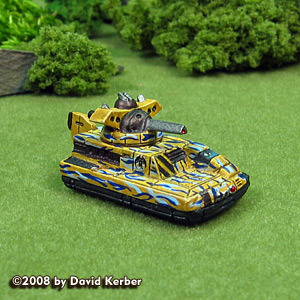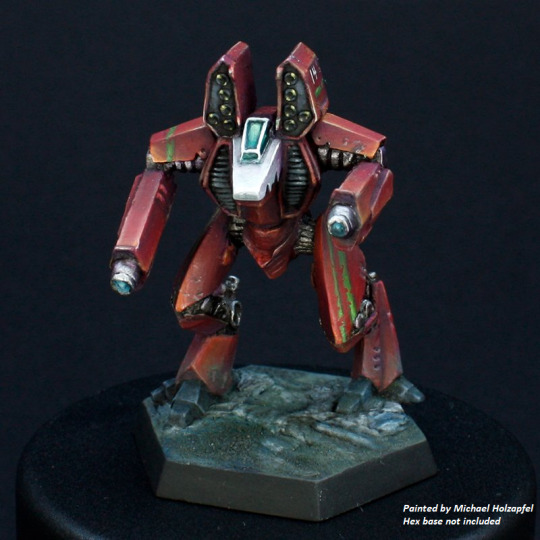#QKD
Text

They're sisters?! >:D
Aka more QKD fanart because... yes :)
#first time drawing Annabeth in a WHILE#it would be so easy to cosplay Amity... all I'm missing is the camp shirt#the quest for the keys of death#qkd#the owl house#toh#the owl house fanfiction#fanfiction fanart#the owl house amity#toh amity#amity blight#pjo#annabeth chase
30 notes
·
View notes
Text
Chapter 8, My Darlings
Wow. I've been writing this AU for about a month now. My doc is currently at 100+ pages, and we're almost to 50k words. Thank you to everyone who's been a faithful reader of my project, your support means so much!!
Chapter 8 is a long one; I had a lot to set up and a lot to reveal, so the length was needed. I had a lot of fun writing this one, so I hope you have a lot of fun reading. :)
Plus, could it be...? Hints of Lumity??

#the quest for the keys of death#qkd#the owl house#toh#owl house#luz noceda#luz toh#toh luz#hunter toh#toh hunter#amity blight#toh amity#toh willow#willow park#toh vee#vee noceda#gus porter#gus toh#lumity#huntlow#aladarius#pjo au#the owl house fanfiction#owl house fanfiction#toh fanfic
31 notes
·
View notes
Text
A point-to-point long-distance quantum key distribution (QKD) over a distance of 1,002 km has been achieved by scientists from the University of Science and Technology of China (USTC) of the Chinese Academy of Sciences (CAS), and their collaborators from Tsinghua University, Jinan Institute of Quantum Technology, and Shanghai Institute of Microsystem and Information Technology (SIMIT), CAS. This milestone not only sets a new world record for non-relay QKD but also provides a solution for high-speed intercity quantum communication. The results were published in Physical Review Letters on May 25th.
QKD is based on the principles of quantum mechanics and enables secure key distribution between two remote parties. When combined with the "one-time pad" encryption method, it can achieve the highest level of security for confidential communication. However, the distance of QKD has been limited by factors such as the channel loss and system noise.
The twin-field QKD (TF-QKD) using sending-or-not-sending (SNS) protocol was demonstrated in the experiment, improving the relation between the key rate and channel transmittance from a linear η to its square root η. Therefore, it can achieve a much longer secure distance than traditional QKD protocols.
To achieve long-distance QKD, the research team collaborated with Yangtze Optical Fiber and Cable Joint Stock Limited Company (YOFC) and used ultra-low-loss fiber based on pure silica core technology, which achieved a maximum attenuation of 0.16 dB/km. SIMIT developed ultra-low-noise superconducting single-photon detectors.
By implementing multiple filters at temperatures of 40 K and 2.2 K to suppress dark counts caused by thermal radiation, the noise of the single-photon detectors was reduced to around 0.02 cps. Furthermore, the team also developed a dual-band phase estimation scheme to avoid the spontaneous Raman scattering noise, reducing the system noise to below 0.01 Hz.
Based on the aforementioned technological developments, the team achieved TF-QKD over a record distance of 1,002 km, with a key rate of 0.0034 bps. This work not only verifies the feasibility of the SNS-TF-QKD scheme at extremely long distances but also demonstrates that this protocol can achieve high key rates in many practical scenarios.
The success of this study holds significant implications for the advancement of secure quantum communication. It opens up new possibilities for long-distance quantum key distribution and paves the way for the realization of high-speed intercity quantum communication networks.
4 notes
·
View notes
Text
The Quantum Enigma: How Unbreakable Code and Lightning Speed Will Change Everything
The Quantum Enigma: How Unbreakable Code and Lightning Speed Will Change Everything #quantumcomputing #dataencryption #dataprocessing #technology #science #quantumsupremacy #quantumcryptography #QKD #cybersecurity #futureofcomputing
Introduction
Imagine a world where the locks on your most sensitive data – bank records, medical histories, even government secrets – could crumble in minutes. That’s the potential danger of quantum computing, but it’s also where the promise of an unprecedented technological revolution lies. The world of computing is on the brink of this seismic shift, fueled by the emergence of quantum…
View On WordPress
#cybersecurity#data encryption#data processing#future of computing#QKD#Quantum Computing#quantum cryptography#quantum supremacy#science#technology
1 note
·
View note
Text
L'Infrastruttura europea di comunicazione quantica
Al via la prima rete quantistica europea. Per la prima volta Italia, Slovenia e Croazia sono state connesse stabilmente tramite EuroQci, l’innovativa rete europea per le comunicazioni quantistiche, pilastro della nuova strategia di sicurezza informatica dell'Unione.
Italia, Slovenia e Croazia sono i primi tre paesi europei ad essere stati collegati tramite EuroQci, l’innovativa rete europea per le comunicazioni quantistiche, a cui l’Italia partecipa con il supporto del Consiglio nazionale delle ricerche (Cnr) e delle università di Firenze e Trieste. Lo riporta la rivista Advanced quantum technologies, che ha pubblicato i risultati della prima dimostrazione pubblica di comunicazione crittografata del programma, effettuata con successo durante la riunione dei ministri del G20 sulla digitalizzazione, svoltosi a Trieste nel 2021.

A giugno 2019, i 27 stati membri dell’Unione europea hanno aderito al progetto EuroQCI, firmando la Dichiarazione sull’infrastruttura europea di comunicazione quantistica. L’obiettivo è di rafforzare la protezione delle istituzioni governative europee, dei loro centri dati, degli ospedali, delle reti energetiche e altro ancora, diventando uno dei pilastri principali della nuova strategia di sicurezza informatica dell'Unione per i prossimi decenni.
EuroQci è coordinata dalla Commissione europea per i collegamenti terrestri in fibra ottica e dall’Agenzia spaziale europea (Esa) per i collegamenti satellitari. Il primo servizio attivato è la Quantum key distribution (Qkd), un protocollo in grado di fornire comunicazioni di dati sicure grazie alle leggi della fisica quantistica, proteggendo da potenziali attacchi. Come sottolinea il comunicato diffuso dal Cnr, qualunque tentativo di intercettare la chiave distribuita attraverso Qkd lascerebbe una traccia usabile per rilevare l'intrusione e di agire contro eventuali minacce.
Dopo la prima dimostrazione pubblica del collegamento Qkd, l’iniziativa EuroQci ha preso ufficialmente il via, collegando stabilmente Trieste a Fiume, con un unico collegamento in fibra di 100 chilometri, e a Lubiana, tramite un trusted node a Postumia, cioè un nodo di ripetizione costituito da una coppia ricevitore-trasmettitore Qkd, in cui i fotoni vengono letti fino a ricostruire la chiave, che poi viene trasmessa sul collegamento adiacente. In questo modo, un link Qkd può essere collegato al successivo per realizzare una rete estesa.
La rete è realizzata grazie all'università di Trieste, al gruppo Quantum communications dell'Istituto nazionale di ottica (Ino) del Cnr di Firenze, alla Technical university of Denmark (Dtu) e all’università di Firenze nell'ambito del “Quantum FVG”, progetto finanziato dalla Regione autonoma Friuli Venezia Giulia, dalla facoltà di Matematica e fisica dell'università di Lubiana, dall'Istituto Ruder Bošković e dalla facoltà di Scienze dei trasporti e del traffico di Zagabria. La realizzazione tecnica è stata curata da Qti srl, spin-off del Cnr e società partecipata Telsy, con il supporto di Tim, Sparkle, Telekom Slovenije, Oiv - Digital signals and networks, Stelkom e Lightnet che hanno fornito l’infrastruttura in fibra ottica.
Read the full article
#Croazia#digitalizzazione#Esa#EuroQci#fibraottica#fisicaquantistica#g20#internetquantistico#italia#QKD#Slovenia
0 notes
Text
Repost with your first ever muse and your most current muse!!!
OLDEST:
((either the most AU amy rose you can think of [who has since turned into one of my OCs, eclaire/E.C.] or

((Shinobu Jacobs from No More Heroes! crude series but i fell in love with her at first sight she's GREAT
((this was also back when i was rping on instant messaging rooms WAAAAAAAY back like in 2008))
MOST CURRENT:

((i could say carol tea, but

((ive got something in the works rn
((wink wonk))
Tagged by: ziltch, nada, none (stole it from @atangledfate who stole it from crime birds)
Tagging: the person reading this :)
#ooc posts#catmun speaks#meme prompts#meme answers#working on the qkd thing in the background itll be up Whenever.
1 note
·
View note
Link
In-depth Understanding of Quantum Key Distribution (QKD) Industry
Industry analysis provides a company with an understanding of its position relative to other companies in the industry. This can help them identify opportunities and potential threats, so they can prepare for the present and future. MRI Research helps organizations to figure out whats happening in a given industry, including demand and supply statistics, degree of competition, state of competition with other emerging industries, future prospects considering technological changes, and external factors on the industry.
0 notes
Text
I should really tag reblogs
#spamt#I don't even reblog that much so I don't have many to look through I dunno why I'm posting this qkd
0 notes
Text
Bitcoin in a Post Quantum Cryptographic World
Quantum computing, once a theoretical concept, is now an impending reality. The development of quantum computers poses significant threats to the security of many cryptographic systems, including Bitcoin. Cryptographic algorithms currently used in Bitcoin and similar systems may become vulnerable to quantum computing attacks, leading to potential disruptions in the blockchain ecosystem. The question arises: What will be the fate of Bitcoin in a post-quantum cryptographic world?

Bitcoin relies on two cryptographic principles: the Elliptic Curve Digital Signature Algorithm (ECDSA) and the SHA-256 hashing function. The ECDSA is used for signing transactions, which verifies the rightful owner of the Bitcoin. On the other hand, the SHA-256 hashing function is used for proof-of-work mechanism, which prevents double-spending. Both principles are expected to become vulnerable in the face of powerful quantum computers.
Quantum Threat to Bitcoin
Quantum computers, due to their inherent nature of superposition and entanglement, can process information on a scale far beyond the capability of classical computers. Shor's Algorithm, a quantum algorithm for factoring integers, could potentially break the ECDSA by deriving the private key from the public key, something that is computationally infeasible with current computing technology. Grover's Algorithm, another quantum algorithm, can significantly speed up the process of finding a nonce, thus jeopardizing the proof-of-work mechanism.
Post-Quantum Cryptography
In a post-quantum world, Bitcoin and similar systems must adapt to maintain their security. This is where post-quantum cryptography (PQC) enters the scene. PQC refers to cryptographic algorithms (usually public-key algorithms) that are thought to be secure against an attack by a quantum computer. These algorithms provide a promising direction for securing Bitcoin and other cryptocurrencies against the quantum threat.
Bitcoin in the Post Quantum World
Adopting a quantum-resistant algorithm is a potential solution to the quantum threat. Bitcoin could potentially transition to a quantum-resistant cryptographic algorithm via a hard fork, a radical change to the blockchain protocol that makes previously invalid blocks/transactions valid (or vice-versa). Such a transition would require a complete consensus in the Bitcoin community, a notoriously difficult achievement given the decentralized nature of the platform.
Moreover, the Bitcoin protocol can be updated with quantum-resistant signature schemes like the Lattice-based, Code-based, Multivariate polynomial, or Hash-based cryptography. These cryptosystems are believed to withstand quantum attacks even with the implementation of Shor's Algorithm.
Additionally, Bitcoin could integrate quantum key distribution (QKD), a secure communication method using a cryptographic protocol involving components of quantum mechanics. It enables two parties to produce a shared random secret key known only to them, which can be used to encrypt and decrypt messages.
Conclusion
In conclusion, the advent of quantum computers does indeed pose a threat to Bitcoin's security. However, with the development of post-quantum cryptography, there are potential solutions to this problem. The future of Bitcoin in a post-quantum world is likely to depend on how quickly and effectively these new cryptographic methods can be implemented. The key is to be prepared and proactive to ensure the longevity of Bitcoin and other cryptocurrencies in the face of this new quantum era.

While the quantum threat may seem daunting, it also presents an opportunity - an opportunity to improve, to innovate, and to adapt. After all, the essence of survival lies in the ability to adapt to change. In the end, Bitcoin, like life, will find a way.
#ko-fi#kofi#geeknik#nostr#art#blog#writing#bitcoin#btc#ecdsa#sha256#shor’s algorithm#quantum computing#superposition#entanglement#quantum mechanics#quantum physics#crypto#cryptocurrency#cryptography#encryption#futurism
2 notes
·
View notes
Text










Huge restock from Iron Wind Metals for BattleTech is up!
20-235 Partisan Heavy Tank
20-254 Glory Fire Support Vehicle
20-278 Heavy Hover APC (Standard) (2)
20-302 Morrigu Fire Support Vehicle
20-310 Forestry / Forestry MOD Variants
20-333 Chaparral Missile Tank (2)
20-337 Thor "Summonor" Prime
20-344 Flashfire FLS-P5
20-382 Heavy LRM Carrier
20-403 JES II Strategic Missile Carrier
20-406 Preta C-PRT-O Invictus
20-411 Deva C-DVA-O Invictus
20-439 Dart DRT-3S / DRT-4S
20-444 Atlas II AS7-D-H
20-455 Plainsman Hover Tank (2)
20-459 Vedette Medium Tank (Ultra) (2)
20-5019 Kestrel VTOL
20-5028 Osprey OSP-26
20-5061 Osteon Prime
20-5082 Gyrfalcon (Standard)
20-5101 Gunsmith CH11-NG
20-5102 Eyrie (Standard)
20-5106 Tiburon
20-5111 Night Stalker NSR-K3
20-5150 Anubis ABS-5Y
20-5178 Quickdraw QDK-8P
20-5193 Hierofalcon Prime / A
20-5198 Atlas AS7-D-H / H2
20-5208 Amarok Standard
20-616 Grand Titan TIT-N10M
20-622 Nightsky NGS-4S
20-682 Komodo KIM-2
20-693 No-Dachi NKA-1K
20-713 Slayer Fighter SL-15
20-723 Warrior Helicopter H-7
20-727 Karnov UR Transport
20-749 Goblin Infantry Support Vehicle (2)
20-755 Spartan SPT-N2
20-761 Devastator DVS-2
20-763 Maelstrom MTR-5K
20-772 Caesar CES-3R
20-783 J. Edgar Hover Light Tank (2)
20-788 Sentinel STN-3L
20-800 Hex Bases (4)
20-822 Demolisher Tank
20-847 Awesome AWS-9Q
20-865 Commando COM-2D
20-872 Quickdraw QKD-4G
20-885 Hermes II HER-2S
20-901 Trebuchet TBT-5N
20-904 O-Bakemono OBK-M10
20-983 Mad Cat Mk II
99-201 Large Flat Top Hex Base #1
99-202 Large Flat Top Hex Base #2
99-203 Extra Large Flat Top Hex Base
AC-006 Flight Base
AC-011 Flight Base Thin Wire (.047)
BT-001 Orc Protomech
BT-004 Afreet Battle Armor
BT-005 Grenadier Battle Armor
BT-007 Rottweiler Battle Armor
BT-008 Void Battle Armor
BT-020 Leopard CV
BT-023 Overlord
BT-028 Cavalier Battle Armor
BT-029 Sloth Battle Armor
BT-030 Sylph Battle Armor
BT-031 Infiltrator MK 2
BT-065 Minigun Cycle
BT-068 Trinity (Asterion) Battle Armor
BT-074 Corsair Micro Fighter
BT-096 Stuka Micro Fighter
BT-097 Chippewa Micro Fighter
BT-110 Sholagar Micro Fighter
BT-114 Sparrowhawk Micro Fighter
BT-118 Shilone Micro Fighter
BT-128 Tornado Battle Armor
BT-133 Corona Battle Armor
BT-134 Gray Death Legion Battle Armor
BT-187 Djinn Battle Armor
BT-189 Kobold Battle Armor
BT-198 Tengu Battle Armor
BT-199 Asura Md. Battle Armor
BT-200 Shedu Assault Battle Armor
BT-201 Nephilim Assault Battle Armor
BT-207 Delphyne ProtoMech
BT-209 Se'irim Medium Battle Armor
BT-222 Tau Wraith
BT-223 Tau Zombie
BT-224 Heavy Jump Infantry
BT-237 Recon Infantry
BT-238 VTOL Infantry
BT-239 Jump Support Infantry
BT-245 Heavy Infantry - Firing
BT-260 Sprint Scout VTOL
BT-297 Ares ARS-V1A Hera
BT-299 Ares ARS-V1C Aphrodite
BT-320 Tracked APC
BT-321 Hover APC
BT-364 Gabriel Hovercraft
BT-370 Kurita Infantry (3)
BT-372 Savannah Master Hovercraft
BT-373 Centaur Protomech
BT-374 Roc Protomech
BT-376 Minotaur Protomech
BT-381 Basic Inner Sphere Battle Armor (3)
BT-383 Longinus Battle Armor (3)
BT-384 Achileus Battle Armor (3)
BT-388 Salamander Battle Armor (3)
BT-391 Fenrir Battle Armor (1)
BT-408 Loki II A
BT-413 Marauder Battle Armor
BT-425 Uziel UZL-8S
BT-427 Balac Strike VTOL (Standard) & (LRM)
BT-436 Buraq (Standard) Battle Armor
BT-460 Saxon APC Standard / Laser / HQ
BT-470 Sojourner C
BT-476 Ares ARS-V1E Apollo
FT-015 Lynx LNX-9C
OP-060 Masakari H Right Arm
Tripod Six Pack
battletech #alphastrike #ironwindmetals #battletechalphastrike #miniatures #catalystgamelabs #battlemech #battletechminiatures #battletechpaintingandcustoms #mecha #tabletop #tabletopgames #tabletopgaming #wargaming #wargames #hobby #scifi #sciencefiction #miniaturepainting #mech #hovertank #6mmminis #6mmscifi #feldherr #dougram #gundam #robotech #armypainter #thearmypainter #chessex
3 notes
·
View notes
Text
QKD -- Hiatus
Hey, my lovely QKD readers! As I mentioned in the notes on my last chapter, I'll be taking a hiatus as production season ramps up for the play I'm in. I'm also struggling with Chapter 9, so this gives me a chance to reorient myself.
I plan to be back by mid-April, but it may be sooner or later, depending on how life works out.
But stay tuned, I may post some one-shots (AU and otherwise) during the hiatus to keep my writing gears greased.
Thanks to those of you who have been so faithful to read and comment on my story, you mean so, so much to me!!
Until next time <3

#the quest for the keys of death#qkd#qkd updates#the owl house#toh#owl house#the owl house fanfiction#owl house fanfiction#toh fanfic#toh fandom#owl house fandom#fanfiction#fanfic#ao3 fanfic#pjo fanfic#pjo au
9 notes
·
View notes
Text
SKDBEOEJEBDNCKQNDPIRVWX FKQVFKWNZPABFKE GHTVSOSVDKS DGJ ALDBEKS D EIDAKSLBFLW DAK FIAVQKF QKD DODVWKSVE
I LOVE RA*BITS
6 notes
·
View notes
Text
Building Secure Communication Networks of the Future
While it may sound like science fiction, a quantum internet could one day exist. Researchers are working to build ultra-secure communication networks that would use the laws of quantum physics to transmit information in an unhackable way. But what is a quantum internet, and how does it work?
Efforts to bring about a quantum network are underway in many places around the world. This year, the United States published its first Quantum Internet Blueprint, laying out a roadmap for making the network a reality over the next decade.

In a quantum network, bits of information are encoded as quantum states. This allows a great deal of information to be transmitted over a very short distance, resulting in very high data rates and extremely secure communications. However, in order to reach practical performance levels, the different components of the network must be carefully coordinated and synchronized. This is a difficult task, and it requires a very careful design of the entire system.
A key challenge is that quantum state information is subject to “decoherence,” an effect that causes the quantum states to lose their quantum properties tech ogle over long distances. A well-designed network will mitigate this effect, but it is challenging to achieve a fully robust, scalable design. This is why a good design process is crucial for the success of any quantum network.
The research community is working to overcome these challenges and develop a scalable design. The most significant challenge is the creation of long-distance entanglement, which is necessary for quantum communication. This is achieved by forming a pair of quantum particles, such as photons, that are linked together. These entangled particles can then be separated and their separate information independently transmitted to different locations.
Once these entangled pairs of photons are sent, they can be reunited and their information combined to form a single, complete bit of data. This process is known as “quantum teleportation.”
Despite the challenges, experimental progress has been swift in recent years. Scientists have already built rudimentary quantum communication links, with the latest link between DOE Argonne National Laboratory and University of Chicago spanning 52 miles. This will be expanded to connect 17 DOE National Laboratories over the coming decade, establishing a working prototype of a quantum internet that could be used for advanced applications such as secure cloud computing.
The earliest practical applications will likely be in areas such as quantum key distribution (QKD). By using QKD, distant participants can share an encryption key that is protected by the immutable principles of quantum technology news mechanics. This would ensure that eavesdroppers can’t intercept the key or decipher the message, even if they are listening in on one end of the conversation.
As the research continues, it’s important that scientists focus on what matters most. ESnet, with its experience in connecting testbeds and supporting end-to-end testing, can play an instrumental role in helping researchers identify the most promising techniques and guide their experiments to a successful outcome.
1 note
·
View note
Text
Quantum Security: Explore how Chune Yang Lum is Transforming Global Security with SpeQtral
The article provides insights into the entrepreneurial journey of Chune Yang Lum, the Co-founder and CEO of SpeQtral. SpeQtral is pioneering the development of space-based quantum systems for secure key delivery on a global scale. By harnessing technology, it is transforming security infrastructure, ensuring protection for sensitive data worldwide.

Chune Yang Lum: Co-founder and CEO of SpeQtral
Chune Yang Lum is the founder and CEO of SpeQtral. He has an educational background in physics and quantum. He holds a Bachelor of Science in Physics from the National University of Singapore and an MSc from Penn State University. He completed his MBA from INSEAD.
Chune Yang Lum was a Research Assistant at the Centre for Quantum Technologies where he experimented on quantum information technology. He worked as an Associate Consultant at ZS Associates and a Summer Associate at Deutsche Bank. Later he worked as a Senior Manager for business development Asia-Pacific at SES and Deputy Director at National University of Singapore. Chune Yang Lum was a Head of Strategic Development at the Centre for Quantum Technologies and later became an Advisor for Industry Relations.
Chune Yang Lum has about 15+ experience in quantum, space, and telecommunication fields. His knowledge of both business and technology has led him to start his own company. Chune Yang Lum along with Dr. Robert Bedington co-founded SpeQtral in the year 2017. SpeQtral is a tech startup that develops space-based quantum systems to secure global networks through encryption keys.
About SpeQtral
SpeQtral is a tech startup that uses quantum science and develops quantum key distribution communication networks for securing global networks and providing data security for governments, corporations, etc. SpeQtral was founded by Chune Yang Lum in the year 2017 and has its headquarters located in Singapore. SpeQtral aims to secure networks for the fast-approaching quantum revolution with their QKD and PQC solutions.
Technology Solutions
SpeQtral, along with technology and harnessing the fundamental laws of the universe aims to protect digital communications. By using the power of quantum properties like entanglement it is possible to make cryptographic keys safer from interception and also create a naturally and perpetually secure system. The main backbone and strength of a global quantum internet are satellite Quantum Key Distribution (QKD) and Post-Quantum Cryptography (PQC). The computing revolution renters several mathematical cryptographic protocols hence protecting encrypted data from bad actors who are waiting to intercept and store encrypted data for later use.
Chune Yang says “QKD by embedding the secret key in particles of light and transmitting it across to the end users, will help to secure and encrypt any communication or data that we transmit to each other.”
Projects of SpeQtral
SpeQtral made a partnership with Telcos and is been working on the implementation of a fiber-based Quantum Key Distribution Solution to provide safer protection for metropolitan networks. Quantum-safe global network is done by using symmetric quantum keys generated and transmitted from satellites as they cannot be hacked and provide a secure communication infrastructure for the long run. A global quantum fabric represents hardware and software systems that are integrated with Quantum-Safe Satellite and Quantum-Safe Terrestrial networks.
SpeQtral is building Singapore’s quantum-safe network with the support of the Singapore government. It is implementing an islands-wide national safe network that can be extended globally. SpooQy-1 is the first cube-sat in the world developed in the year 2019. It has successfully done the operations of polarization-entangled sources and detectors in space. SpeQtre will be launched by 2025 in collaboration with RAL Space which is the second-gen entangled photon source and built based on lessons learnt from SpooQy-1. SpeQtral-1 is a tech demonstrator and aims to validate global QKD distribution from space.
Products
SpeQtral will operate satellites and infrastructure to provide services to the user but if they wish to operate their infrastructure then it can provide hardware solutions. The different products of SpeQtral are SpooQie satellite, QuantOptix satellite, SQUINT, TarQIS, and Backend Quantum Unit (BQU).
Comprising a group of expert teams that are well-versed in quantum physics, communication, aerospace, optics, and system engineering, under the leadership of Chune Yang Lum, SpeQtral is been doing a great job of transforming the world’s networks for the quantum revolution and securing global networks.
Visit More : https://apacbusinesstimes.com/quantum-security-explore-how-chune-yang-lum-is-transforming-global-security-with-speqtral/
0 notes
Note
🌻🌻🌻
new ask game send me a 🌻 and ill just tell you whatever the fuck i want

((1. after using the new post editor vs the old post editor and switching back and forth between them on my blogs, i gotta say! old post editor fucks

((though the new post editor has a TON of QoL changes that elevator to more of an equal status
((like, being able to tell when a special thing like italics starts and stops is a fucking amazing feature and i wish it was on the old post editor
((or being able to edit tags, or being able to make text BIG or BIGGER, or things like that

((but running with the old post editor for a while on the qkd blog has brought about some really funny/interesting bits!






((this gimmick is really fun. it feels like ive been running the blog for months but its only been less than one. i love that blog
((2. speaking of--if things havent been obvious so far, then lemme say it outright right now
((i am going through the entirety of poppy's story on that blog, pre-poppy to... an ending, of sorts
((which means events will just sort of happen over there, in slight congruence to when they happened in poppy. such aaaaaaaaas

((this whole thing! in fact, it's happening in a thread right now~.

((at the end of arcs/events i plan on tagging all of the previous posts that took place in that event as like... a relevant tag, so that i might chrono them and maybe my things can be read as a sort of story. this is... going to be a pain. but! i am incredibly committed to all of this now. i am excited. things are going to fucking happen.

((uh, sorry for all the kit-blog talk. i am just kind of. really excited for that blog! i have this base guideline already set for me to follow and i get to explore how this MF goes through the entirety of what-we-know in poppy. including somee other things that are at play because of the nature of just. knowing more than my characters know

((having characters like lila and chicadino just making funni appearances this early into the story is just so much fun you dont even know.

((sidenote bonus thing but i really want chicadino to interact with @/fallen-symphony crew because like. he's a villain, with an outrageous lucky star at that. it'd be REALLY FUCKING FUN. i wanna do arthur interactions IN GENERAL, REALLY

((but alas. there is literally no conceivable way i could approach first about this without majorly breaking things and his knowledge on the world rn. his little birdy would not know about multiverse theory (yet).

((3. im thinking of like, making some slight changes on this blog? to save myself the sanity? but i dont know how.
((i aint stoppin' playing carol--i love this dumbass just as much as i love kit
((but man oh man i look at the amount of threads i have on here versus the amount i have on kit and its like

((well of course im over there more--i can actually count the things i have to do over there. and one of them finished! and another one has a finish line i can conceivably get to! cant say much for the other threads but im sure a finish line can be gotten.

((i do feel bad that activity has waned over here. again, carol has a lot of shit still happening and a lot of things i still havent properly addressed. the ideas are in my head, its just
((pen has to touch paper, y'know? that's it, that's all it is. i dont wanna take on new threads here because i get this anxiety that its just gonna stall me from actually doing things. i already have important threads that do need to get finished that i simply havent touched in like, weeks.

((maybe i just need to find these threads and hyper focus on them and then like, one or two more things. have something that can keep my sanity, well, sane. because otherwise it is going to be very hard for me to keep up things over here.

((i pray that this same issue doesnt occur on qkd. ive been thinking about implementing a thread cap of sorts, just so the overwhelming thing doesnt happen.

((still need to think about things tho. my mind is being RACKED as of current.))
#ooc posts#catmun speaks#meme answers#asks#aureumdraconeus#as you can see i have kit brainrot rn#hahaaaaaaaa#ha
2 notes
·
View notes
Text
What diode trends are driving innovations in quantum cryptography?
In the field of quantum cryptography, several diode trends are playing a key role in driving innovations:
Single-Photon Sources: Diodes are crucial for generating single photons, which are used in quantum key distribution (QKD) protocols for secure communication.
Quantum Dot Diodes: These diodes are used to create quantum dots, which can trap and release single electrons, enabling the creation of qubits for quantum computing and secure communication.
Superconducting Diodes: Superconducting diodes are used in superconducting nanowire single-photon detectors (SNSPDs), which are key components in quantum key distribution systems.
Low-Noise Diodes: Diodes with low noise levels are essential for detecting single photons accurately, improving the efficiency of quantum communication systems.
Integration with Quantum Systems: Researchers are exploring ways to integrate diodes directly with quantum systems to improve overall efficiency and performance in quantum cryptography.
0 notes